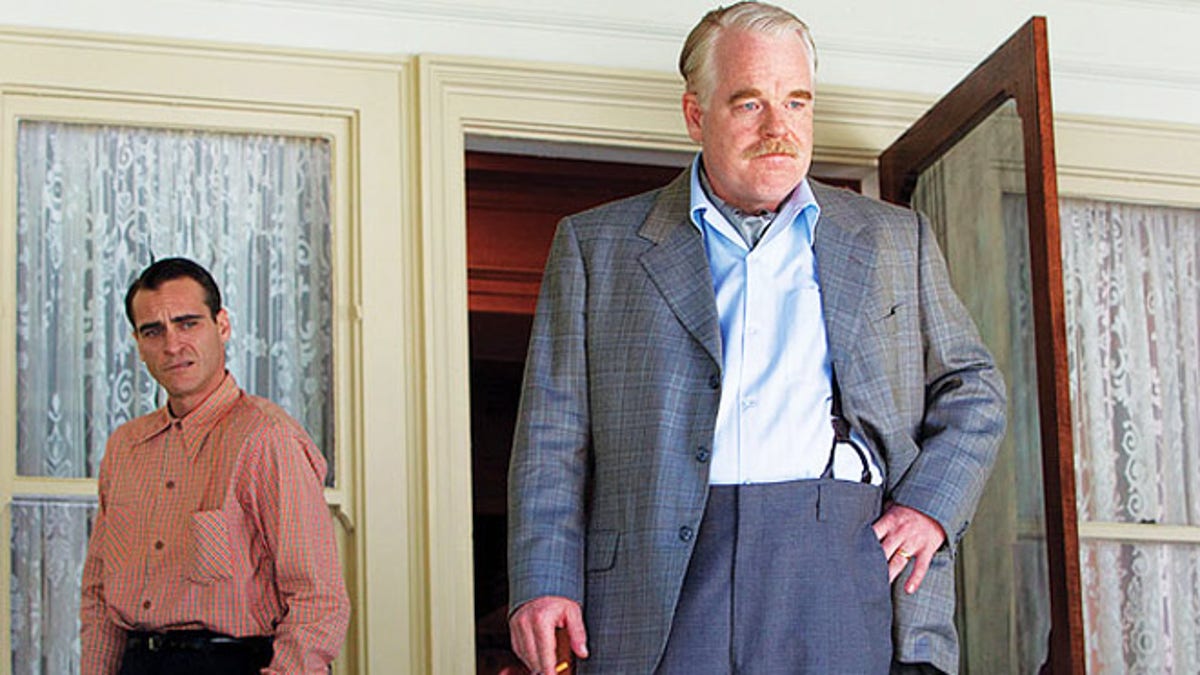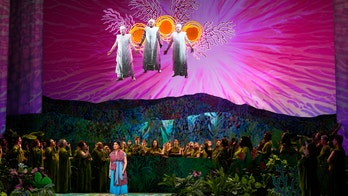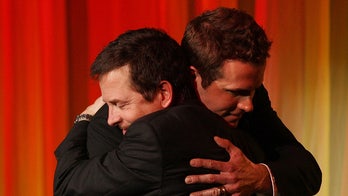
NEW YORK – Chilling, hypnotic and strikingly beautiful, Paul Thomas Anderson’s “The Master” is a powerful essay on post-WWII America, faith and identity. Joaquin Phoenix and Philip Seymour Hoffmann are electrifying, like two expert magicians at the top of their game.
But “The Master,” like many of Anderson’s films, may be polarizing. Anderson, along with Phoenix and Hoffman, give us plenty to digest, especially about the effects of war and what compels people to follow a startup Scientology-like religion.
Freddie Quell is an honored WWII Navy vet who finds himself lost and abandoned after the war. Completely unsure of his future or of his self-worth, Quell becomes a reactionary figure, a self-destructive alcoholic, a publicly violent and disruptive vagabond. When he crashes a party on a yacht headed to New York, he meets the erudite, philosophical author Lancaster Dodd (Philip Seymour Hoffman). Dodd, looking at Freddie as a wild beast in need of taming, uses the Vet as a guinea pig for his newly-formed religion simply titled The Cause.
Dodd soon grows into a social celebrity, ‘processing’ followers with his idea that our souls live in all times, and vehemently attacking his critics, even going as far as accepting Freddie as his attack dog.
Phoenix gives a brutally physical performance as Freddie Quell. It’s a marvel to watch an actor pack so much raw and twisted emotion deep into a character and watch the reaction burn from the inside out. Phoenix leaves little doubt that he is indeed the master performer of this film, heck of the year. He portrays a humanity that has been battered and abused and taken advantage of one too many times. He’s a fuse that’s entirely exciting to see lit. Phoenix has Oscar written all over him.
Anderson plays with idea of animals being tethered, trained and mastered. Dodd, a misanthrope up on his high mountain of condescension, looks upon Freddie and the world as a society of blind and ignorant beasts. During one monologue he refers to leashing a dragon and training it to roll over and play dead. Such is the discreet motivation behind Dodd’s religion. But Hoffman, like Phoenix, gives the character a tick or two. Beneath his asceticism is a needy and insecure man. He’s a soft-spoken bully that preys on the weak. He’s as lost a man as Freddie, but unlike his protégé, he’s unable to be honest about his dishonesty. He may call himself Master, but who, asks Anderson, is the real animal?
Amy Adams gives a career-turning role as Dodd’s zealous wife. Adams breaks the mold of playing innocent, flighty characters and delivers a solid, assertive performance. She nicely grounds the electricity sparked from Hoffman and Phoenix and channels it into her own.
Radiohead’s Jonny Greenwood reunites with Anderson and provides an unsettling postmodern orchestral score. Greenwood’s music, like Phoenix’s performance, is every bit psychological and effective, like a metronome ticking to an uneven beat. Between Greenwood’s dissonant score, the period songs and 50s production design, “The Master” gives an uneasy sensation of an inverted Rockwell painting.
“The Master” is shot with the rarely used 65mm format, giving the film a gorgeous wide frame. Anderson and cinematographer Mihai Malaimare, Jr. fill every scene, every frame with incredible period detail. The format, also used in such classics like “Lawrence of Arabia” and “2001: A Space Odyssey,” provides an incredible depth of field. Many times throughout the film, we see our characters move deeper into the frame, giving off a spectacular sense of depth and space that still isn’t even rivaled by the best of the recent 3D films. This is the first major American theatrical feature film to entirely shoot on 65mm stock since Kenneth Branagh’s “Hamlet” in 1996.
If you are fortunate enough to be near a theater that is showing “The Master” with a 70mm projector (it will most likely be billed as such) then jump at the opportunity to see it in all its splendor.
“The Master” opens in NYC and LA on Sept. 14 and nationally on Sept. 21.






